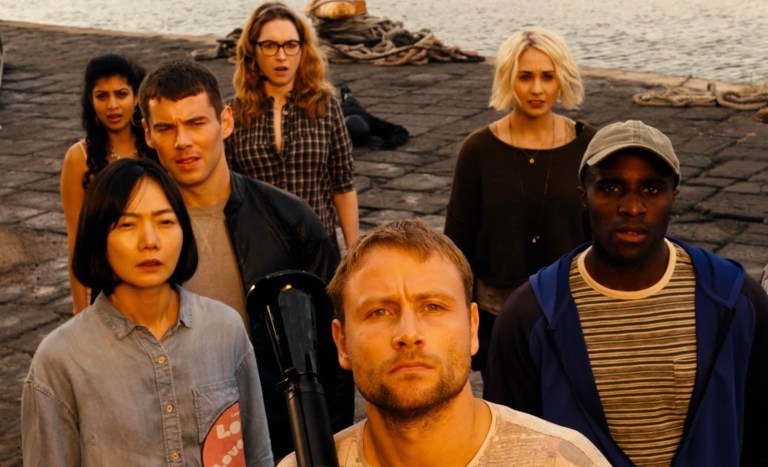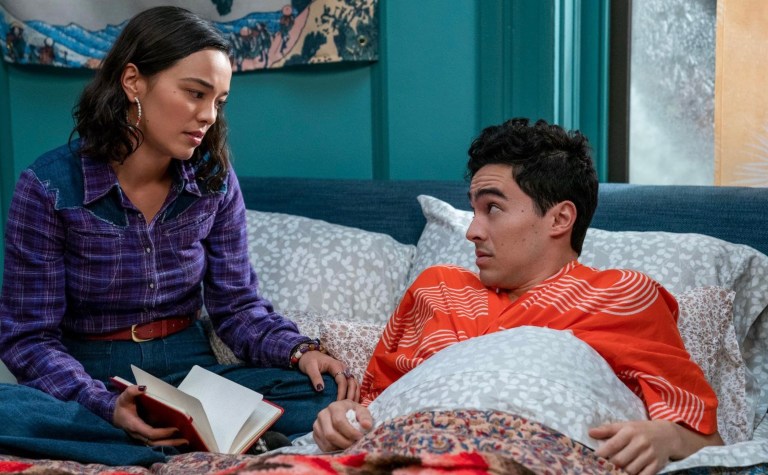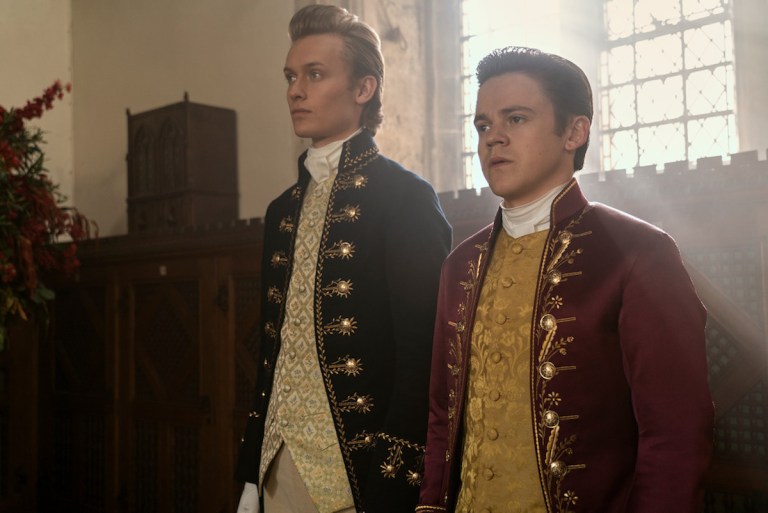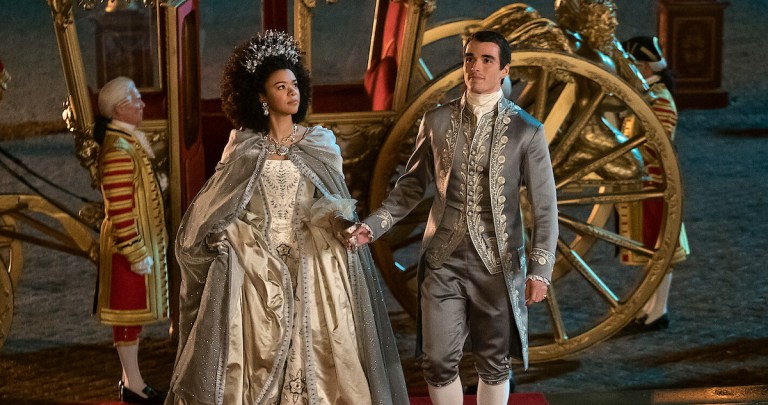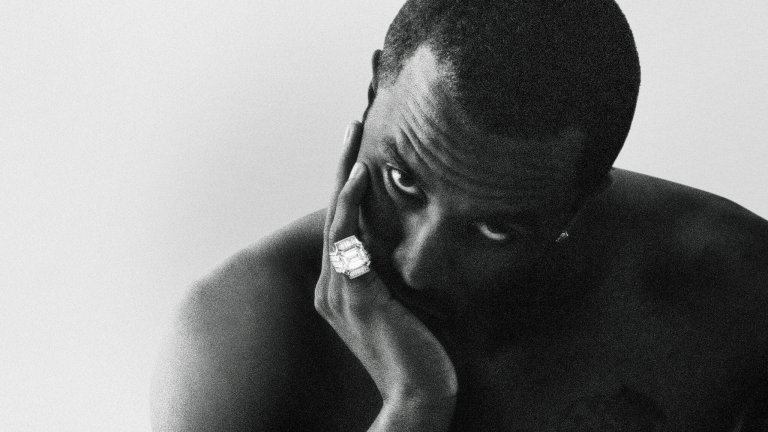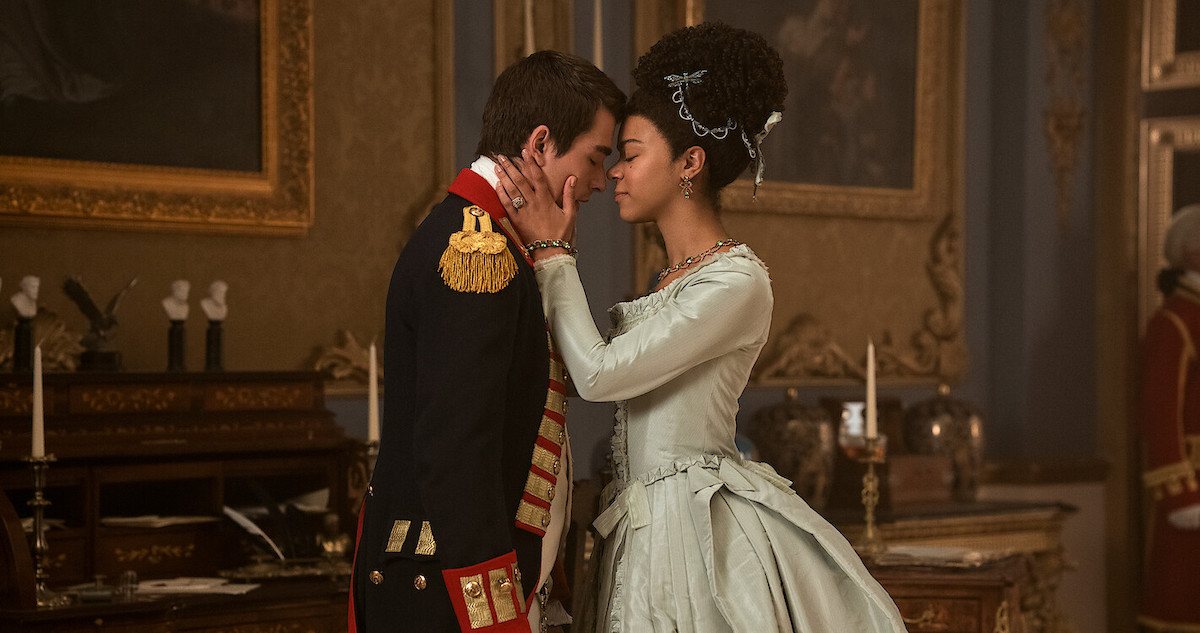
Why Queen Charlotte and King George’s Enemies-To-Lovers Tale Is Far Better Than Daphne and the Duke’s in ‘Bridgerton’
By ![]() Josh Lezmi
Josh Lezmi
Queen Charlotte and King George boast a much more moving and realistic enemies-to-lovers story than Daphne and Simon from the premiere season of ‘Bridgerton.’
Queen Charlotte premiered on Netflix to rave reviews from critics and audiences alike, boasting yet another whirlwind romance, but a bit more sociopolitical relevance and narrative complexity than its Bridgerton predecessors.
The relationship between Queen Charlotte and King George, like that between Daphne and the Duke of Hastings, is an enemies-to-lovers arc. Yet, despite this overarching throughline, Queen Charlotte and King George’s romance is very different from that of Daphne and the Duke.
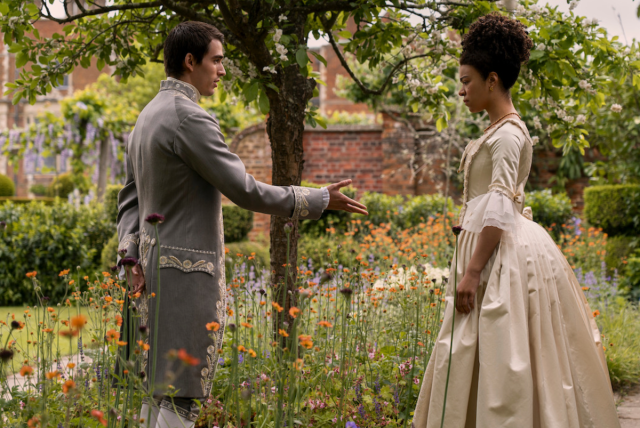
Charlotte and George’s love is not to be confused with the passion that ignites when opposites attract. Rather, they represent two individuals who, yearning to break from the shackles of their societal expectations, are forced together for the good of others. They do not resent one another, but the structures in place that would have them unite.
Spoiler Warning for Queen Charlotte: A Bridgerton Story
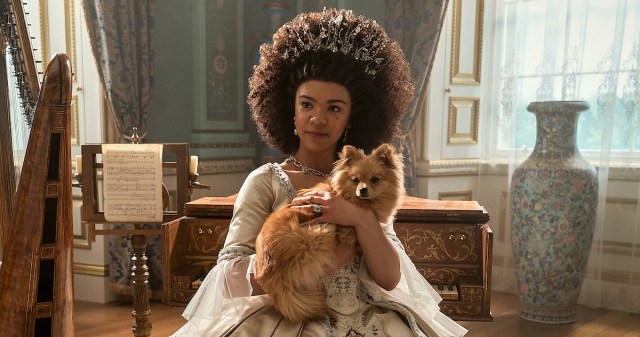
A little refresher on the relationship between Daphne and the Duke in Season 1 of ‘Bridgerton’
Daphne is butterflies and dandelions. She is prim and proper, and more than willing to succumb to the pomp and circumstance of the ton. The Duke is brooding and mysterious, stubborn and independent. His contemptuous gazes and condescending scoffs for all he deems superfluous only add to his intrigue. It is a tale as old as time: the bad boy falls for the good girl (and vice versa).
Opposites attract, yes, but such dynamics often only work when the underlying desires of both parties are more aligned than meets the eye. When, deep down, the bad boy yearns to be understood — yearns to marry a woman who wants the best for him. When, deep down, the woman sees a man breaking from the shackles of his adolescent angst to become a worthy partner. That is not what is at play between The Duke and Daphne.
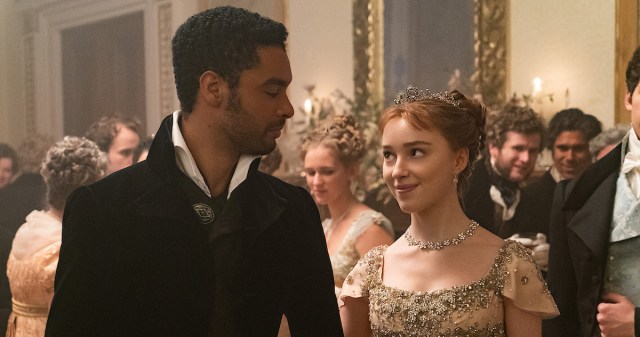
These two are constantly trying to mold each other to their own desires. Daphne wants a family. The Duke insists he does not. Simon also keeps secrets about who he is from Daphne, leading them to repeat an argumentative cycle interrupted only by passionate sex.
Steam does not an everlasting love story make. Daphne even tries to trick the Duke and get pregnant when she discovers the real reason he won’t have kids. Does this sound like the foundation for a healthy relationship? There are so many dark emotions — vindictiveness, spite, obstinance, denial, and pure rage — consistently bubbling underneath the passionate surface. When the flame burns out, what’s left? This may be an enemies-to-lovers arc. The problem: these two stay enemies all the while becoming lovers.
Breaking down the perfect enemies-to-lovers-arc between Charlotte and George in ‘Queen Charlotte’
Queen Charlotte and King George know nothing about each other before it is determined that they will be wed. They don’t get a chance to swoon, to gaze at each other from across the garden. They must go from marriage to love, not from love to marriage. And, it is this very structure at the base of most of their tension.
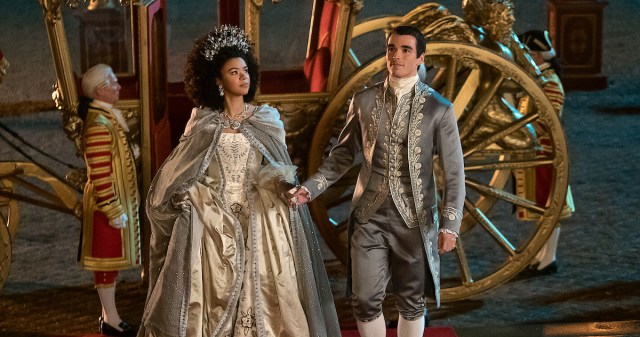
They begin as enemies, but, in reality, are not angry with one another, but with society. As they grow closer, it becomes clear that this is a tale of birds of a feather flocking together — not opposites attracting. These two are both intellectuals. They both benefit from wit and cleverness. They can challenge each other in the bedroom and in the study. They want the same things in life — family, closeness, dependability.
From the moment King George no longer needs to hide his mental health struggles from Queen Charlotte — realizing she can both be trusted with such sensitive information and will stand by his side through it — they are headed for greatness. They may have passion. They have steamy scenes in the dining hall, in the observatory, in the bedroom, and in the bathtub, but this passion is not what holds them together.
What holds them together is their commitment to one another as allies — allies against the King’s mother who is nagging and untrustworthy, allies against parliament who would dare to challenge the King’s status, allies against the “old ways” that would keep the ton antiquated and politically regressive. They choose to love one another and they hold on for dear life, discovering that, while the world may sometimes leave them lost, when together, they are found.
Queen Charlotte’s quote to her son, when he is nervous to wed, best describes the love story we see unfold between Charlotte and George in the spinoff series:
“Love is not a thing one is able or not able to do based on some magic. Some chemistry. That is for plays. Love is determination. Love is a choice one makes. You take someone in marriage, and you choose to love them. The life of a royal is lonely. So you grab someone and you hang on. You love, and you love hard, because if you do not, you are lost.”
